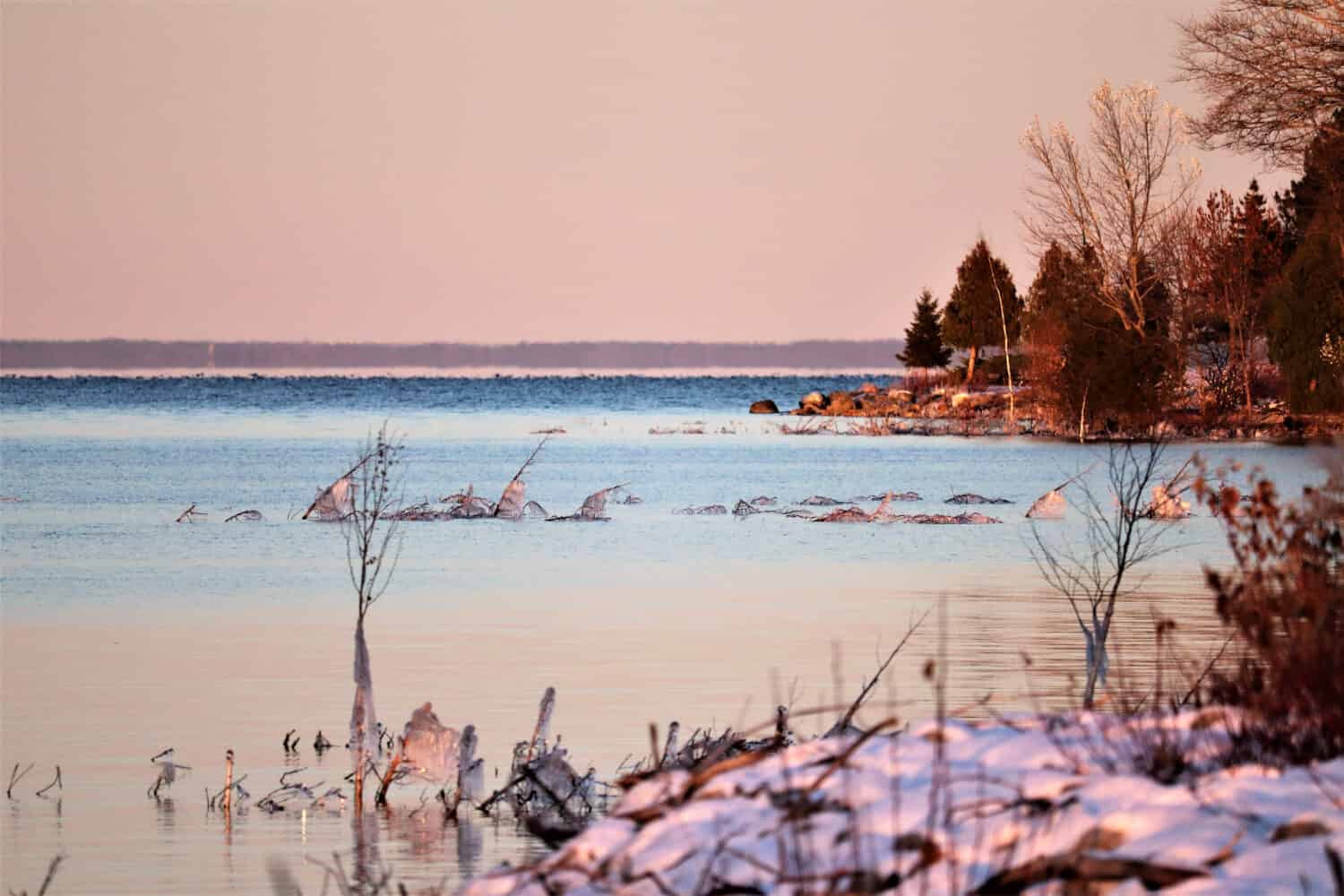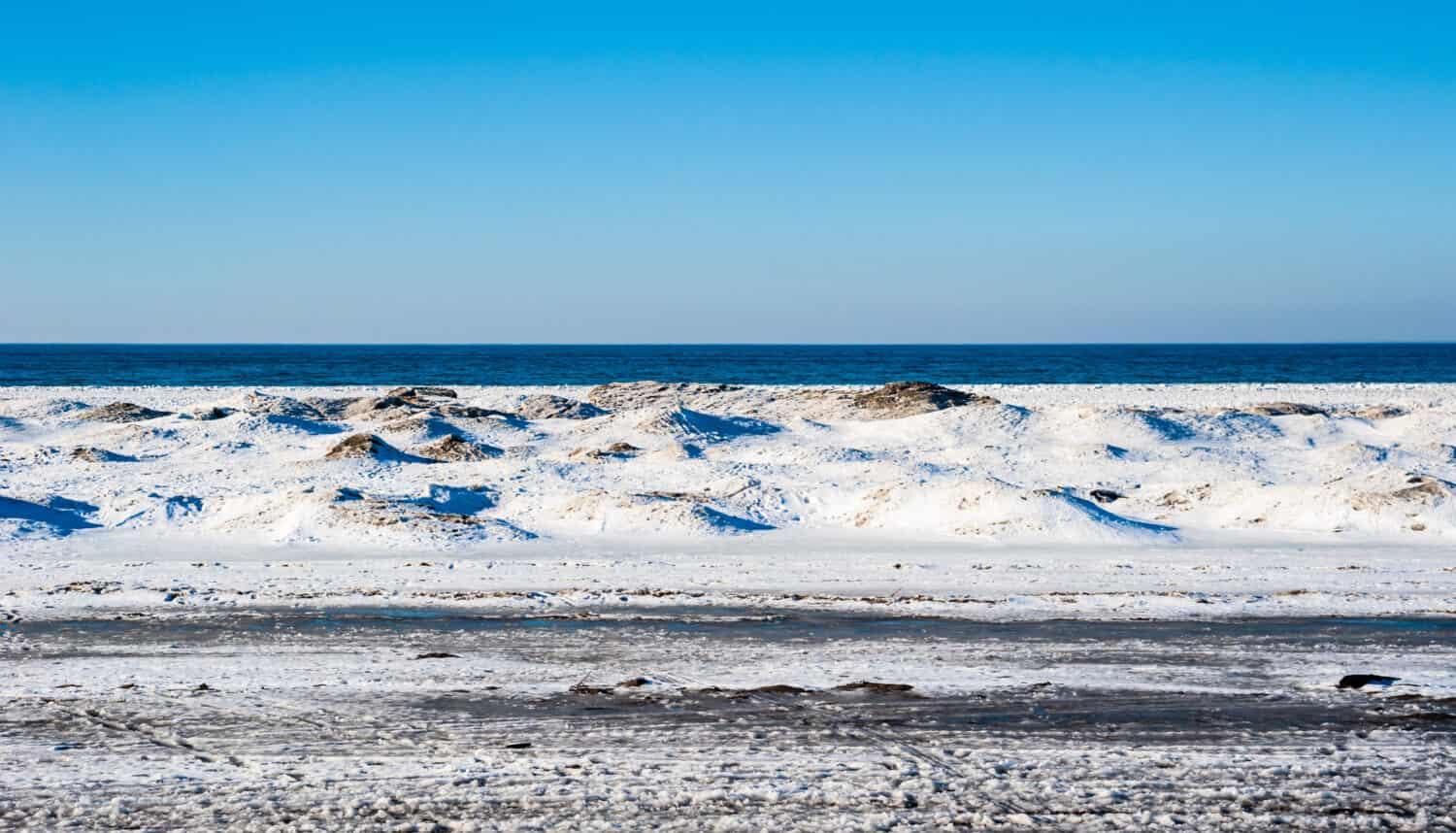Canada is known for its scenic views and cold winters. But did you know it’s also home to the longest freshwater beach in the world? Discover the longest beach in Canada and why millions of people treasure it worldwide.
What Is the Longest Beach in Canada?

Wasaga Beach attracts millions of visitors to its shores every summer.
©Russ Heinl/Shutterstock.com
The longest beach in Canada is Wasaga Beach. It’s located in the town of Wasaga in Simcoe County, Ontario, Canada, and is the longest freshwater beach in the world. Each year, it welcomes an astounding 2 million visitors from around the world to its impressive shoreline. The shore is almost 9 miles of soft sand and clear water. The resort community is also family-friendly and less than two hours from Toronto.
The beach is divided into sections from east to west, numbered 1-6. Beach 1, also called Main Beach, is the most popular among tourists because it’s the most commercially built, with themed stores and a stretch of bars and restaurants. On the other hand, Beaches 2 and 4 offer a more peaceful atmosphere with a lot of shade, hiking trails, and a boardwalk. Beaches 3, 5, and 6 have fewer accommodations and commercial spots. Instead, they are close to the residential area with family-owned cottages. Beach 3 is also dubbed “the dog beach” because of its designated dog area.
Every section has unique features, so find the spot you love the most and relax.
The History of Wasaga Beach

Wasaga Beach is a premier tourist destination.
©Yonton7/Shutterstock.com
Today, Wasaga Beach is a premier tourist destination. This Blue Flag beach is part of the Wasaga Beach Provincial Park, covering 4,557 acres of the surrounding land. However, the longest beach in Canada didn’t always look like this.
Going back in time, the first people to inhabit the area were First Nations peoples. In fact, the region was the traditional land of the Anishinaabeg. The first occupants of Wasaga and the surrounding area were the Algonquin First Nation, but the First Nation Metis and Inuit people also have roots here. These groups lived on the land until the British military arrived along the banks of the Nottawasaga River in the early 1800s.
The name Wasaga Beach was first used toward the end of the 19th century. Until then, the area was known as the top of Sunnidale Township. However, the city divided the Township and created Wasaga Beach, a derivative of Nottawasaga. The beautiful beachfront was already a popular destination for holiday and family trips. From then, the community continued growing, acting as a runway for small planes in 1934 and motorcycle racing.
Wasaga Beach officially became a town in 1974, increasing its popularity and the nearby amenities. Commercial shops and family cottages sprouted up, laying the foundation for today’s famous spot. Now, the area is home to over 21,000 permanent residents and an additional 16,000 part-time residents.
Plants Around Wasaga Beach

The perennial Hill’s thistle grows in the pine-oak inland of Wasaga Beach.
©LesPalenik/Shutterstock.com
The sand of Wasaga Beach is always moving. The winds, waves, and currents from the Bay cause the landscape to change, forcing the flora and fauna to adapt. But native beach plants like Marram grass keep the sand in place. As a result, we get the rare freshwater dune ecosystem.
The landscape surrounding the longest beach in Canada is diverse and full of life. But the beach is a primary location for sea rockets and milkweed. Milkweed is essential for the park’s monarch butterfly conservation because caterpillars exclusively feed on the leaves. With that in mind, you have a chance to spot one of these orange-striped beauties around the shore.
Further inland, the landscape transitions to a pine-oak ecosystem, including scattered trees, large open spaces with prairie wildflowers, and many grasses and shrubs. Here, wild bergamot, butterfly weed, and New Jersey tea grow. Another unique species in the pine-oak is Hill’s thistle. This perennial grows in dry, sandy soil and loves the sun.
Animals Around Wasaga Beach

Caspian terns are one of the many bird species living on the shores of Wasaga.
©Paul Reeves Photography/Shutterstock.com
The longest beach in Canada is home to many endangered and at-risk species. Visitors can see various creatures, including killdeer, ring-billed gulls, Caspian terns, white-winged scoters, and long-tailed ducks. You might spot a little brown bat in a tree or flying through the air a few hours after sunset. Some fish swimming in the water are sturgeon, salmon, and carp.
The eastern hog-nosed snake is a threatened species that lives in the park and other parts of Ontario. They live in sandy habitats, like beaches and dry woods, where they can catch toads. Hog-nosed snakes have a distinct appearance but are harmless, so don’t be afraid if you see one slithering near the park.
Another endangered species is the piping plover, a beautiful sand-colored shorebird. They were abundant along the Great Lakes but their populations declined once recreational activities along the beaches increased.
Things to Do Near the Longest Beach in Canada

Wasaga Beach features offshore ridges and a zone of foredunes.
©ArchonCodex/Shutterstock.com
The longest beach in Canada provides recreation space for swimmers and sunbathers, but there are also many commercial businesses, shops, and historical locations nearby to visit.
Wasaga Beach Events
Day or night, Wasaga Beach hosts special events, cultural gatherings, spectator sports, festivals, and other weekly events. You can even watch a movie under the stars, make something crafty, or enjoy a new cuisine. Take a look online to see what’s planned for the year and mark your calendar for your next outing.
Nancy Island Historic Site
The Nancy Island Historic Site has operated since 1928, representing a significant event from the War of 1812 in Simcoe County and the Gregorian Bay. Visitors can participate in hands-on historical demonstrations alongside costumed park members to learn about HMS Nancy’s battle against American schooners. The charred hull remains on the island as a reminder of this pivotal moment in Canadian history.
Wasaga Dunes
Wasaga Dunes RV Resort is a few minutes from Wasaga Beach in the heart of Ontario’s cottage country. The Dunes offer more than 150 private full-service sites for arriving visitors. Bring your RV and outdoor gear to spend some time in the woodlands. The resort provides activities for everyone, including wagon rides, access to dirt bikes and ATV trails, trail systems for hiking and biking, and horseshoe tournaments.
The photo featured at the top of this post is © Content zilla/Shutterstock.com
Thank you for reading! Have some feedback for us? Contact the AZ Animals editorial team.







